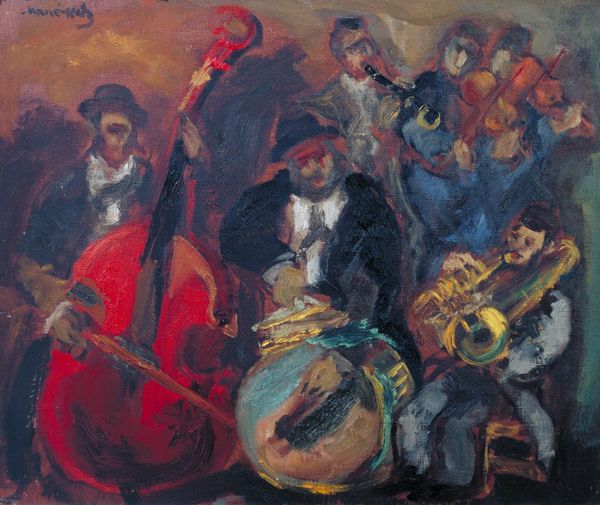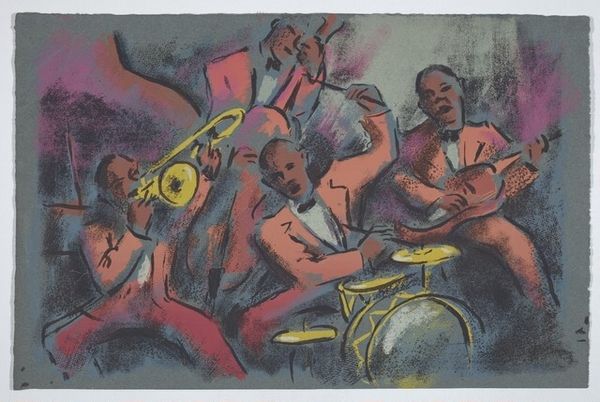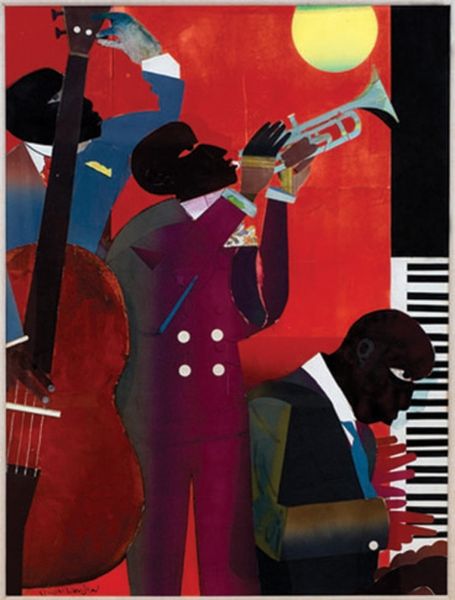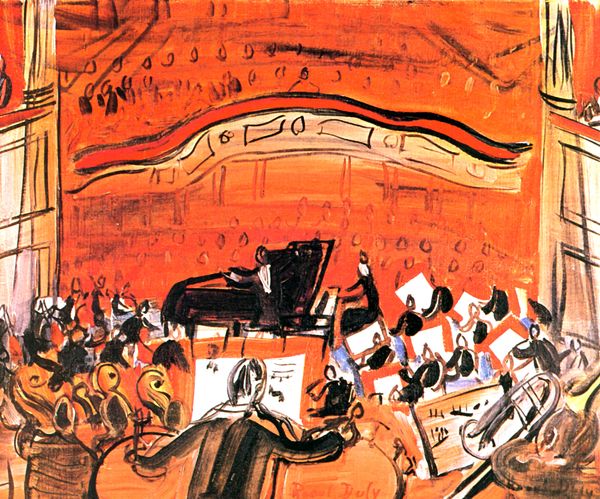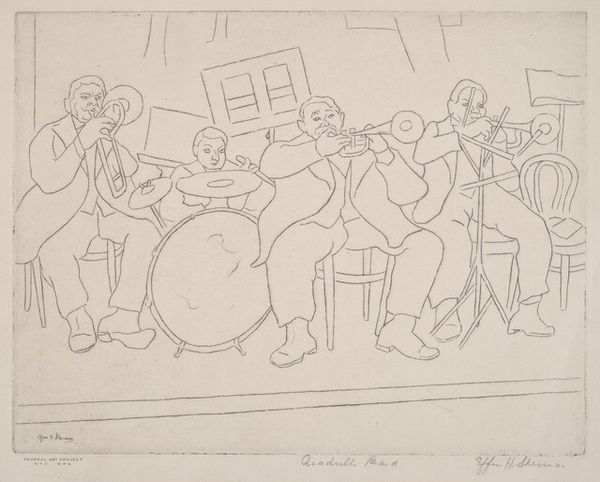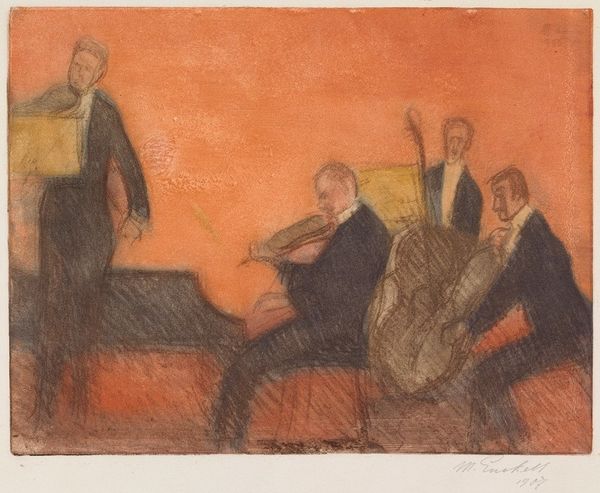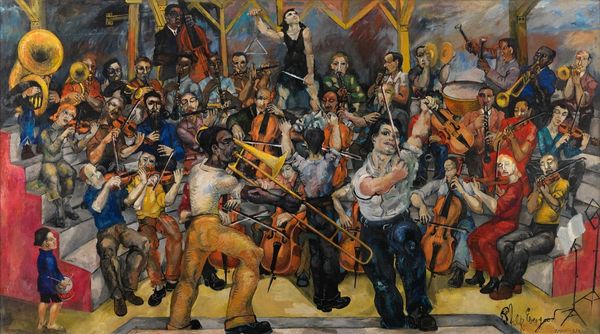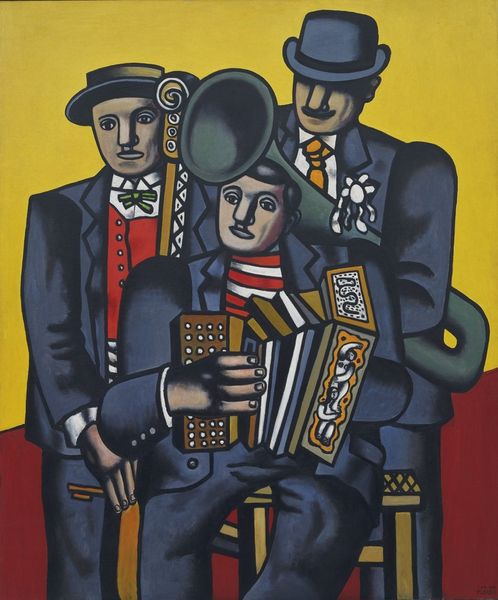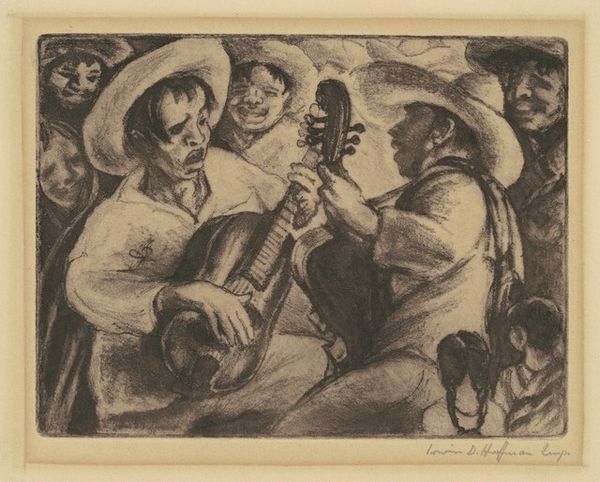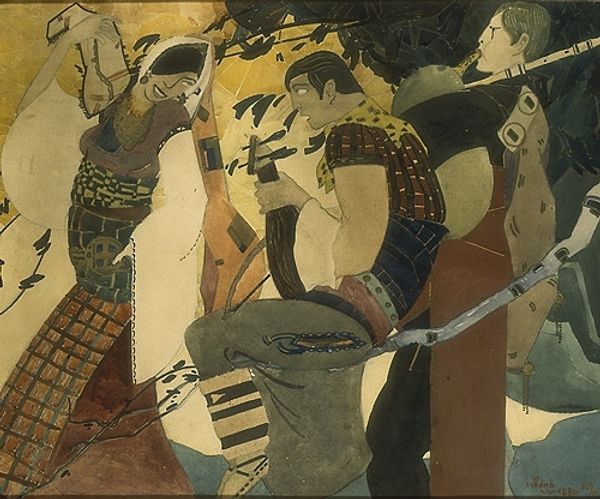
Dimensions: image (irregular): 33.66 × 41.28 cm (13 1/4 × 16 1/4 in.) sheet: 35.56 × 43.18 cm (14 × 17 in.)
Copyright: National Gallery of Art: CC0 1.0
Curator: We're looking at "Jam Session," a watercolor print by Leonard Pytlak, likely created sometime in the 1940s. Editor: It feels raw, spontaneous. The washes of color, the simplified forms—it’s almost feverish. It evokes a smoky, late-night club instantly. Curator: Observe how Pytlak employs the watercolor medium. The visible paper support isn't concealed; it’s part of the work's fabric, suggesting both speed and an awareness of materials during the creative moment. And look how the use of color evokes a jazz club with a limited palette. Editor: Yes, the restricted palette serves to bring out particular details like the instruments themselves. Consider the upward thrust of the double bass. The golden brass of the horn takes center stage too; those vibrant golds immediately signal celebratory sounds, of musical intensity. Curator: And that central figure, seemingly lost in song—his pose suggests ecstatic release, perhaps speaking to the communal aspect of music-making, but it may also reflect the production conditions where the musician has found creative freedom. Editor: Freedom, but also maybe a deeper yearning. The upturned face— isn’t it almost a primal symbol for spiritual connection? Music becomes a vehicle, a way to transcend the everyday realities facing these musicians during a period of social struggle. There is a shared musical experience here that represents resilience. Curator: Right, this makes me reflect upon access, distribution, and labor in art creation during the WPA period. How could printmaking facilitate wider distribution and support artists? The watercolor’s replicability means affordability for a wide range of individuals. Editor: Agreed. And by emphasizing those instruments, doesn't the artist remind us of the tradition of improvisation and spontaneity inherent in this musical genre? A celebration of the lived, creative work, of community and freedom in jazz performance that cannot be represented in a simple score. Curator: Pytlak gives us much to contemplate regarding materials, methods, and social context when art represents lived culture. Editor: A fascinating and symbolic convergence indeed. It has prompted a reflection on community resilience in performance and imagery and that remains so vital in contemporary society.
Comments
No comments
Be the first to comment and join the conversation on the ultimate creative platform.
